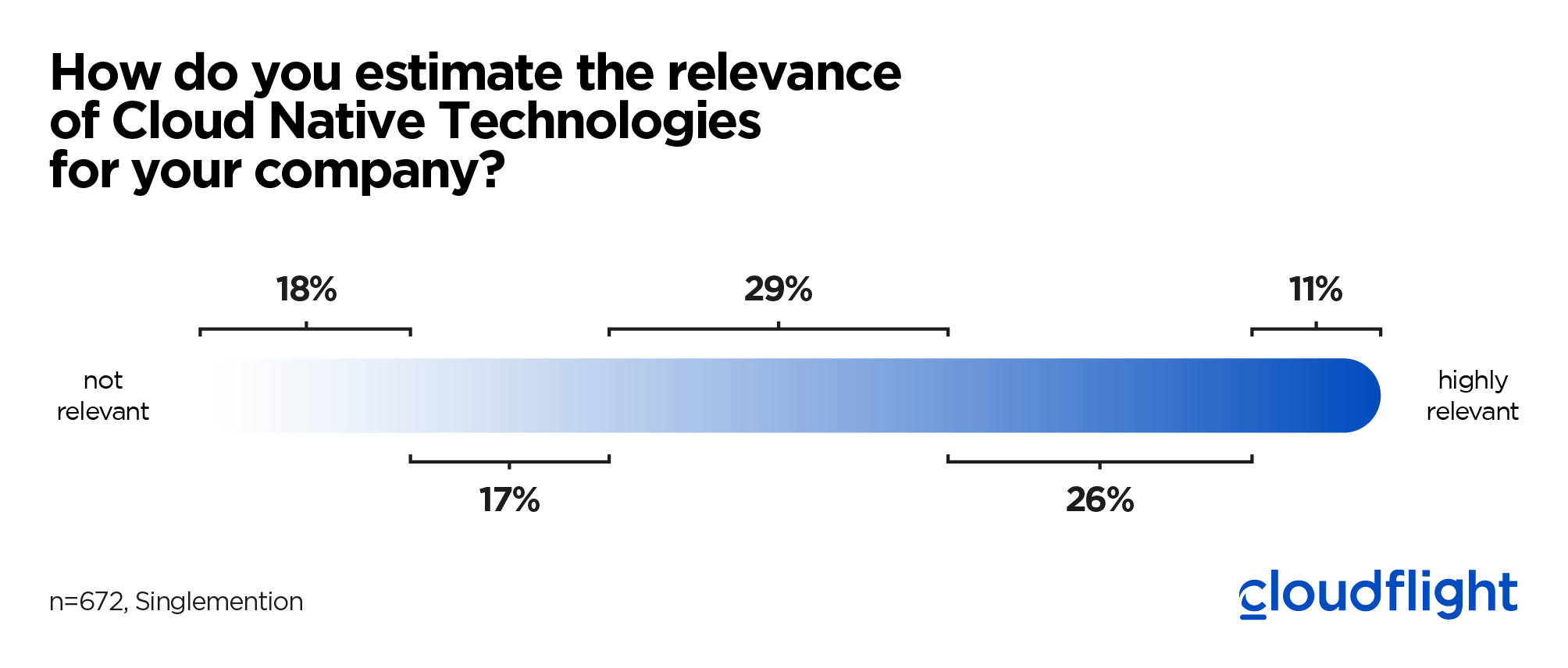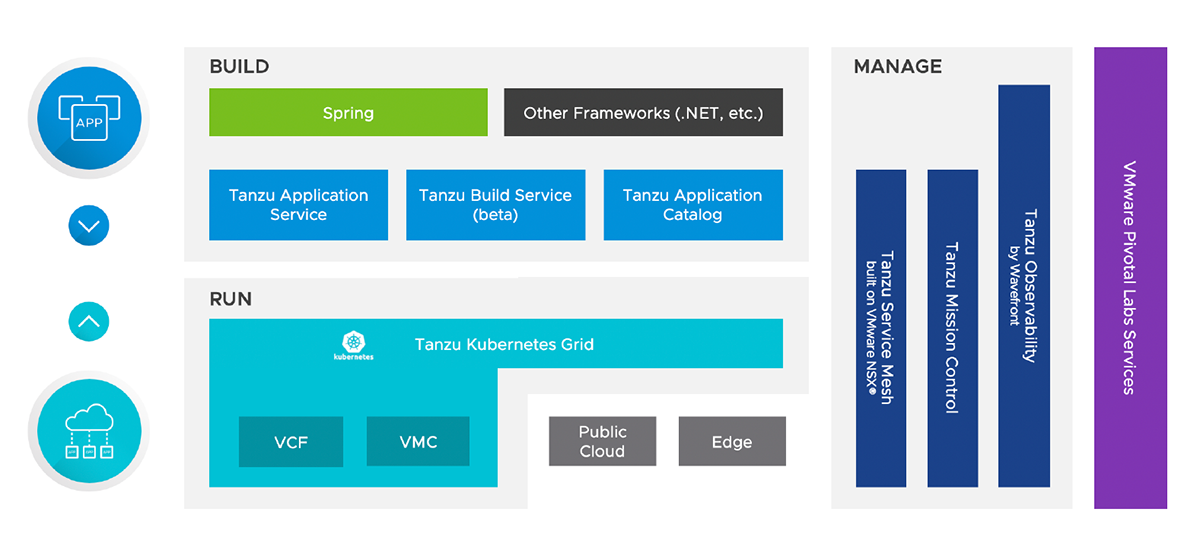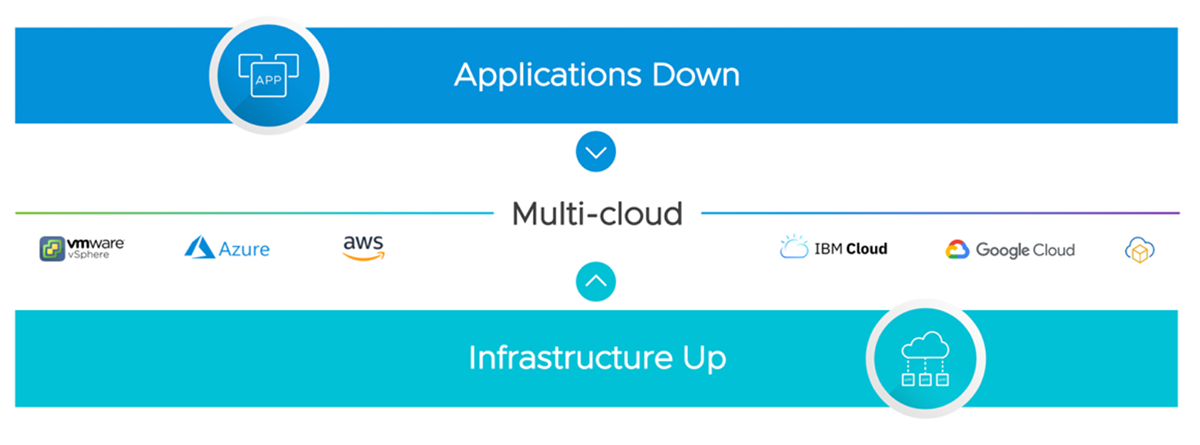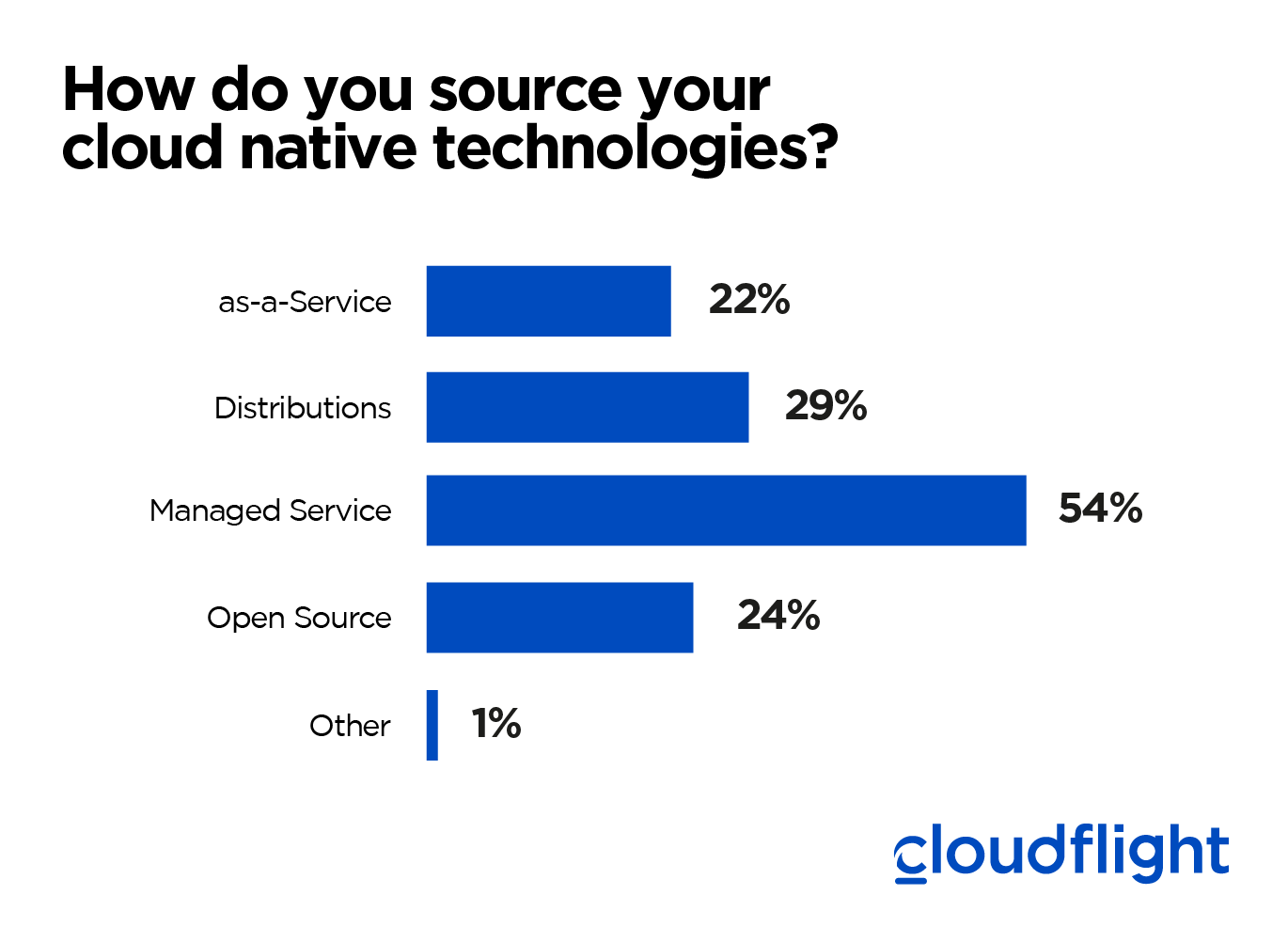- Todays´ IT and architecture design is shaped by the container orchestration standard Kubernetes – providers and users are increasingly aligning their services to it
- With Tanzu, VMware brings a Kubernetes-based portfolio for the development and management of software in hybrid environments and even questions the supremacy of the VMs
- In the future, VMware will also rely more heavily on Kubernetes in its core portfolio, such as the vSphere, thereby underlining the relevance and development for agile, hybrid and container-controlled application development and its operation
IT departments at companies in Germany, Austria and Switzerland are still facing an unsolved problem: How can they develop and operate a modern IT architecture that meets increasing business demands, optimally supports traditional workloads, and gets the most out of the advances and potential of cloud and cloud native technologies?
Until very recently, the answer was often, “We do everything, but somehow interdependently. We will not be able to juggle all the requirements at the same time and within one architecture!”
Reaction to the triumph of cloud native?
The developments of the last 12 months, in particular the running of Kubernetes in the hybrid cloud, supported by the Cloud Native Computing Foundation as the organisation behind Kubernetes, the cloud hyperscalers and numerous open-source projects, however, have already proven in many areas that it may actually be possible to combine all three objectives (modern architecture, new business requirements, and the handling of traditional workloads). Google Anthos, Azure Arc, on-premise Kubernetes services etc., as well as VMware’s partnerships with AWS, Microsoft und Google, promise more synergy than many decision-makers thought impossible (not without reason). Our cloud native trends show that these are not a flash in the pan.
Today, the majority of critical enterprise applications are still operated outside of the public cloud. Around 60 to 80 percent of these applications are operated in private clouds or on-premises. This number will certainly change in the future, as more and more critical workloads also constitute new digital workloads that, as digital platforms, ensure company sales but can still be integrated into legacy IT systems.
This year, two thirds of companies in Germany, Austria and Switzerland intend to gain experience using cloud native technologies. This has been shown by our current study on cloud native in a corporate context, which we will shortly publish in our research area. In other words, they are at any rate being trialled in testing environments with cloud native technologies, in particular containers and Kubernetes for productivity.
Is your company still lagging, or are you possibly hesitant because the new world of open-source projects and tools means too much change in the IT systems that have taken you years to develop?
If so, at least you are not entirely alone. Even if a growing euphoria surrounding cloud native technologies is generally setting in, the decision-makers are not yet ready to consider their relevance immeasurable.
The same applies for VMware. This virtualisation giant, which holds almost 85% of the market shares in its sector, has been venturing into the Kubernetes world over the past two years. With numerous acquisitions, including the integration of Pivotal within the Dell group and the container start-up Heptio, plus several partnerships, VMware has moved remarkably more in an open-source direction than many thought would be possible. The VMware portfolio now includes major new innovations, with Project Pacific and Tanzu.
The Tanzu portfolio – real hybrid and multicloud for VMs and containers
VMware Tanzu was presented at VMworld last August as VMware’s new product and service portfolio for the development, operation and management of software using Kubernetes. Tanzu is now in the public beta stage and is being used by several companies in testing and initial production environments.
Tanzu has many VMware features and is embedded in particular in its own ecosystem. With close integration within vSphere (in particular version 7, which comes with a comprehensive Kubernetes update), NSX etc., many well-known interfaces from the VMware management and security architecture are just a mouse click away.
Functionally, the Tanzu portfolio goes further than many of the other approaches. Cultivated from the former Pivotal and Cloud Foundry portfolio, Tanzu is a remoulded variant that includes not only the management of applications in Kubernetes, but also numerous other features.
What Tanzu has to offer in the final stage:
- Build & Run – Development environments and tools for the running of applications in containers
- Connect & Protect – Interfaces and an open operating architecture for on-premise and private clouds or hyperscalers, including network security features from the NSX portfolio
- Manage – Services for the management and monitoring of the containers and their microservices applications
- Experience – A collection of recommended open-source tools on the basis of the integrated Bitnami stack

This works partly with the common open-source tools such as the Istio service mesh tool and Fluentd for logging, but mostly with VMware’s own tools, which have recently been purchased or which have existed and been expanded in the portfolio for years.
The lock-in factor remains despite all openness.
Is VMware eating the world?
In spite of the hype and euphoria surrounding new innovative technologies, the majority of the business-critical use cases take place in classic IT infrastructures. This advantage enables VMware to continue its existence as a strong player in the market. Contrary to the hope of many drivers, in the case of cloud transformation within a company’s own infrastructure, not all software can be operated natively in the public cloud and provide all the advantages that were intended.
Instead, packaged software in Kubernetes environments is now becoming a factor, as the adjustment and redevelopment of solutions in an agile microservices environment have not always worked perfectly.
Therefore, VMware is once again in a favourable starting position to run the majority of the relevant applications under its own steam. With integration in vSphere 7, which is in turn based increasingly on Kubernetes, and the connection of all relevant public clouds, VMware Tanzu is pursuing the idea of the infrastructure-independent management of containers and applications. 
Partnerships with all cloud providers have created a marriage of convenience which VMware did need to survive, but can now use as an innovation driver in the next rounds of enterprise IT.
For their part, the cloud service providers may have launched similar tools (Google Anthos, Azure Arc etc.), which are not only promising but very well-engineered and have already (quite rightly) created high expectations amongst decision-makers, but the acquisition of cloud native technologies is currently a challenge. Only very few companies are in a position to run their individual software products, which are increasingly critical to success, completely independently on a self-service basis. The majority of companies are looking for managed-service alternatives.
For instance, we at Cloudflight are companions of these strategies, which develop and provide software on the basis of the latest technology standards and in Kubernetes environments, in the public or private cloud.
In addition, VMware has itself provided many services in its Tanzu portfolio as managed services, again significantly reducing the complexity for users. 
VMware Tanzu – already prepared to dominate the market?
VMware Tanzu is two things in particular:
- The symbol of the VMware vision of combining virtual machines and containers in one hybrid management and orchestration platform
- The next-generation VMware portfolio, which will dictate the successes and failures of the coming years
Unlike many of the existing Kubernetes distributions, tools and management platforms, VMware does not necessarily rely on a completely open best-of-breed approach; instead, it packs a large portion of the VMware portfolio into Tanzu or integrates it particularly closely. For many companies which began to rely on VMware some time ago for their infrastructure stacks, this may be more of a blessing than a curse. For the new generation of developers, digital start-ups and companies without a VMware footprint, the lock-in factor is likely to be a decisive blocker, meaning that they will continue to rely on open solutions from the CNCF landscape or with Red Hat OpenShift.
Nevertheless, VMware heralds a new era, making it easier for many companies in an enterprise environment to start using Kubernetes and creating a powerful architecture for the extensive orchestration of the application landscape. It must prove itself and overcome some hurdles, however, because Tanzu’s beta version leaves some questions unanswered and does not offer all the solutions of the planned completed expansion phase. If companies do follow the trend of maintaining their virtual machines and containers in one environment, the chances of success for VMware are enormous.
In a growing market, however, there are enough alternatives on offer for the hardcore cloud native and open source fans for the long-term co-existence of Tanzu with many other options and the CNCF to be guaranteed.
